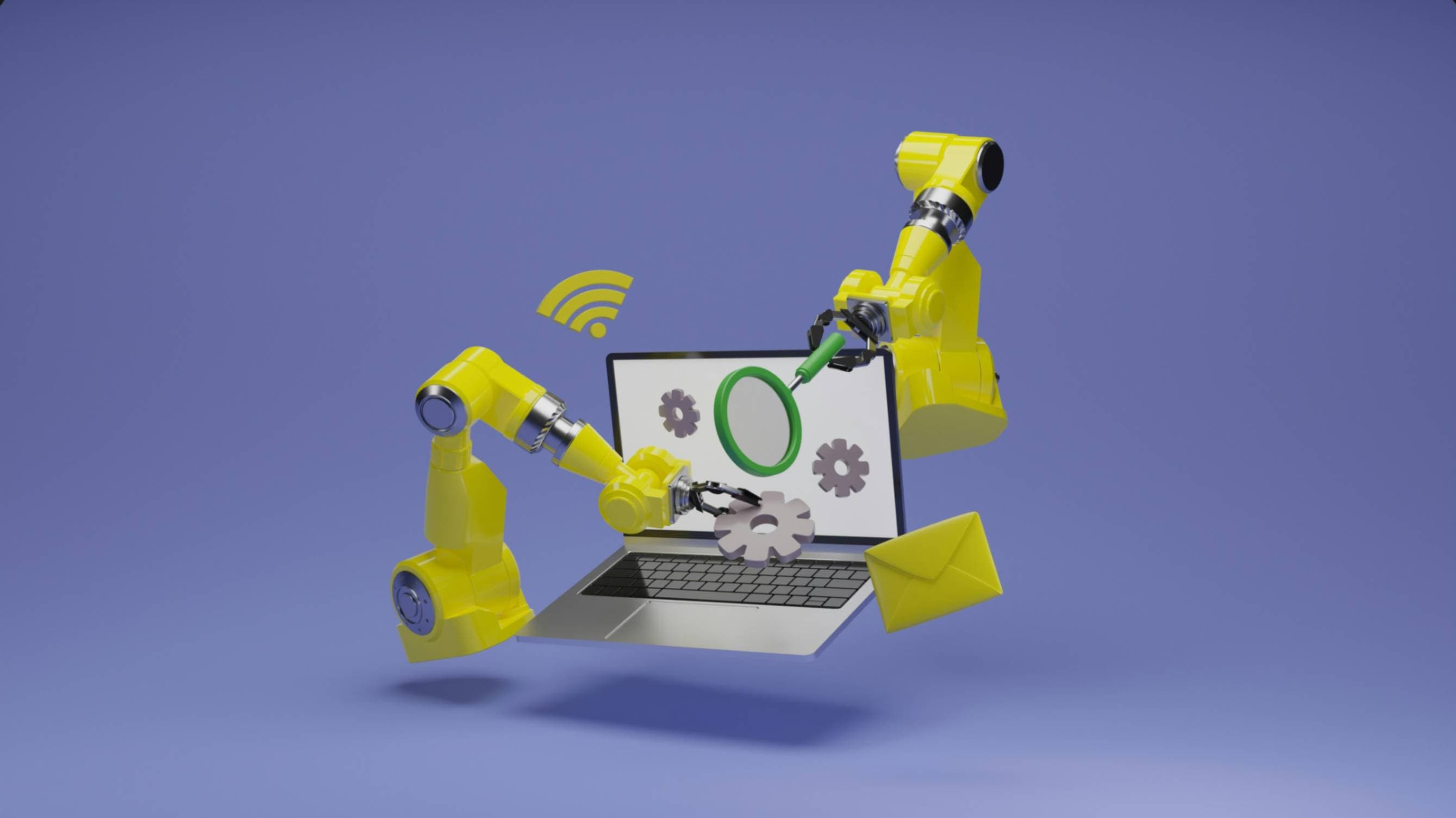
The Case for Schools Building Their Own Technology Solutions
Schools face mounting pressure to adopt the latest educational technology, often at staggering costs. Yet many of these "innovative" platforms are surprisingly simple under the hood—particularly AI tools that are essentially wrappers around ChatGPT or other widely available APIs. This raises a compelling question: why shouldn't schools build their own solutions?
The Financial Argument
The numbers are hard to ignore. Educational AI platforms often charge $5,000 to $50,000 annually for features that cost mere dollars per student when accessing the underlying APIs directly. A school paying $20,000 for an AI tutoring platform might be purchasing something a capable computer science teacher could build in a few weeks for the cost of $500 in API credits.
This isn't theoretical. The OpenAI API charges around $0.01-0.03 per 1,000 tokens for GPT-4 level models. Even with heavy student usage, a school of 500 students might spend $500-2,000 annually on direct API costs—compared to tens of thousands for a polished commercial wrapper. The markup isn't paying for sophisticated technology; it's paying for marketing, sales teams, and profit margins on relatively simple software.
What Vendors Are Really Selling
When you examine what many educational AI platforms actually do, the simplicity becomes striking. They collect student input through a web form, send it to an AI API with some custom instructions, receive the response, and display it in a branded interface. Some add a database to store conversation history. Others include basic analytics dashboards. These are valuable features, certainly, but they're not technically complex.
The one legitimate technical challenge these platforms solve—and the problem vendors love to emphasize—is security. When a student uses an AI tool directly in their browser, exposing the API key would allow anyone to rack up charges on the school's account. This is a real concern, but it's also a solved problem with well-established solutions.
The answer is embarrassingly straightforward: put a simple server between the student and the API. The student's browser sends requests to your school's server, which holds the API key securely and forwards requests to OpenAI or whichever service you're using. The server can also implement rate limiting to prevent abuse, log usage for monitoring, and add custom business logic. This architecture—a basic backend proxy—is covered in introductory web development courses. It's not proprietary magic; it's fundamental software design that countless free tutorials explain in detail.
Modern development platforms make this even easier. Services like Vercel, Railway, and AWS Lambda allow schools to deploy these intermediary servers with minimal configuration. Environment variables keep API keys secure. The entire setup might take a competent developer an afternoon, or a computer science class a week or two as a learning project.
Once students understand this pattern, the curtain pulls back on the entire educational technology industry. That $15,000 AI writing assistant? It's a form, a server, an API call, and some CSS. The $30,000 personalized tutoring platform? Same basic architecture with a database added to remember previous conversations. These companies aren't charging for technical complexity; they're charging because schools don't realize how simple the underlying structure really is.
The Educational Opportunity
Perhaps the most compelling argument for building technology in-house has nothing to do with saving money. When students and teachers develop their own tools, they transform what would be a line-item expense into a profound educational experience.
Consider a computer science class tasked with building an AI study assistant for their school. Students aren't completing abstract coding exercises—they're solving real problems for real users. They interview teachers about what features would actually help. They design interfaces their classmates will use daily. They troubleshoot when something breaks and feel genuine pride when they see their creation making a difference.
Learning to build the secure backend becomes a lesson in both software architecture and cybersecurity. Students understand why client-side API keys are dangerous, how servers authenticate requests, and why rate limiting matters. These concepts gain weight because the stakes are real—their solution will protect actual school resources and serve actual users.
This kind of authentic project-based learning teaches technical skills that transfer far beyond the classroom. Students learn to work with APIs, manage databases, design user interfaces, and think about privacy and security. More importantly, they learn that "advanced technology" isn't magic performed by Silicon Valley wizards—it's built by ordinary people using learnable skills and following established patterns.
Teachers gain valuable technical literacy too. A computer science instructor who has built a custom AI application understands these tools at a deeper level than any professional development workshop could provide. This knowledge ripples outward as they become the go-to resource for colleagues seeking to integrate technology meaningfully into their own classrooms. When a history teacher asks, "Could we build something that helps students analyze primary sources?" the answer becomes "Absolutely—let's sketch out what that would look like" rather than "We'd need to find a vendor."
Customization and Control
Commercial educational software lives in an impossible position. It must serve thousands of schools with wildly different needs, student populations, and existing systems. The result is inevitably generic—packed with features most schools never use while missing the specific functionality they actually need.
Building in-house flips this equation entirely. A school can create exactly what it needs, nothing more and nothing less. If the history department wants an AI tool trained specifically on primary source analysis for their Civil War unit, they can have it. If the English teachers need automated feedback that aligns with their particular rubric, they can build it. If the math department wants an AI tutor that shows work step-by-step using their preferred notation, that's a few hours of prompt engineering away. These aren't features a commercial vendor would prioritize, but they're exactly what makes technology useful in context.
Control over student data presents another crucial advantage. When schools use third-party platforms, they're trusting vendors with sensitive information about minors—their academic performance, behavioral patterns, and personal details. Building internally means data never leaves the school's control. There are no terms of service to parse, no worries about whether a company might be sold or change its privacy policy, no dependence on a vendor's security practices. The school's server logs what it needs for functionality and nothing more.
Integration poses yet another benefit. Commercial platforms rarely play nicely with each other or with a school's existing systems. Building custom solutions means they can be designed from the ground up to work with whatever infrastructure is already in place, pulling data from the student information system or pushing assignments to the learning management platform without clunky workarounds.
The Practical Path Forward
This vision sounds utopian until you consider the practical obstacles. Teachers are already overwhelmed. Most schools lack dedicated IT staff, let alone developers. Student projects might work brilliantly in May but break mysteriously in September when their creators have graduated.
These concerns are real but manageable with the right approach. Schools don't need to replace their entire technology stack overnight. The key is identifying high-value, low-risk opportunities where the effort-to-benefit ratio makes sense.
The ideal candidates are tools that are expensive, relatively simple, and non-critical. An AI-powered study guide that occasionally goes offline is inconvenient; a student information system that loses grades would be catastrophic. Start with the former, not the latter.
A computer science teacher might propose building a custom AI chatbot as a semester-long class project. The first few weeks cover API basics, backend development, and interface design. Students learn why the server-proxy pattern matters for security, implementing it themselves rather than just reading about it abstractly. They work in teams, each developing a different subject-specific tutor. By semester's end, the school has four or five functional prototypes. Even if only one or two prove genuinely useful, the project has paid dividends in learning while potentially creating something valuable.
Modern development tools make this far more feasible than it once was. Platforms like Replit allow students to code collaboratively in their browsers without complex setup. Services like Vercel handle deployment and scaling automatically. No-code and low-code tools can bridge gaps in technical expertise. The barrier to entry has never been lower, and the security concerns that once seemed daunting are now handled by well-documented patterns and platform features designed specifically to make secure development accessible.
Documentation becomes crucial for sustainability. When projects are well-documented, they don't die when their creators move on. Next year's students can maintain, improve, and learn from what previous classes built. This continuity transforms one-off projects into lasting institutional assets while providing new students with codebases to study and improve—a more authentic introduction to software development than starting from scratch.
A Broader Cultural Shift
The benefits of building technology in-house extend beyond any individual project. Schools that embrace this approach cultivate a fundamentally different relationship with technology.
Instead of viewing themselves as consumers who must accept whatever vendors offer, schools become creators who shape their own digital environment. This matters profoundly for students' self-conception. When they see that the "sophisticated AI platform" their school uses was built by last year's seniors using the same APIs available to anyone, technology transforms from mysterious and intimidating to understandable and achievable.
This cultural shift has implications for equity too. Students at well-funded schools already have access to every imaginable educational technology. Students at under-resourced schools often make do with outdated tools or nothing at all. But the underlying APIs and development platforms? Those cost the same regardless of zip code. A talented student with an encouraging teacher can build something remarkable with free or cheap resources, partially leveling a playing field tilted heavily toward wealth.
Consider what students learn about agency and problem-solving. When they encounter a technological limitation or frustration, the response isn't "I guess we're stuck with it" but "maybe we could fix that." This mindset—that problems are solvable and that you might be the one to solve them—serves students regardless of whether they pursue careers in technology.
Addressing Legitimate Concerns
None of this means schools should reject all commercial software. Enterprise-grade tools bring real value: professional support, regulatory compliance guarantees, comprehensive testing, and the resources of companies dedicated to solving specific problems. A school's student information system, payroll software, and core infrastructure should probably remain commercial products.
The argument isn't for technological isolationism. It's for strategic selectivity. Schools should critically evaluate whether expensive tools are truly sophisticated or merely repackaging accessible technology with clever marketing. When it's the latter—as it often is with education-focused AI tools—building in-house deserves serious consideration.
Time constraints deserve acknowledgment too. Teachers shouldn't become unpaid software developers on top of their existing responsibilities. The proposal here is to make software development itself an educational activity. When computer science students build tools their school actually uses, the teacher is doing their job, not taking on additional burden. The software is a byproduct of teaching, not a separate obligation.
The Bottom Line
The educational technology market thrives on information asymmetry. Companies benefit when schools believe their products are more sophisticated than they actually are. Many "AI-powered" platforms are indeed just wrappers around ChatGPT—a fact that becomes obvious once you understand how APIs work and recognize that the "complex security infrastructure" is actually a standard server pattern taught in introductory courses.
Schools have an opportunity to flip the script. By building selectively in-house, they save substantial money while providing students with authentic learning experiences. They gain tools tailored to their specific needs and maintain control over student data. Most importantly, they foster a culture where technology is something to create and shape, not just consume and endure.
This doesn't require every school to become a software company. It requires recognizing that some expensive tools are simpler than they appear, that students are more capable than we assume, and that the most valuable learning often happens when the stakes are real and the audience is sitting in the classroom next door.
The question isn't whether schools can afford to build their own technology. Increasingly, it's whether they can afford not to.
More from Artificial Intelligence
Explore related articles on similar topics





